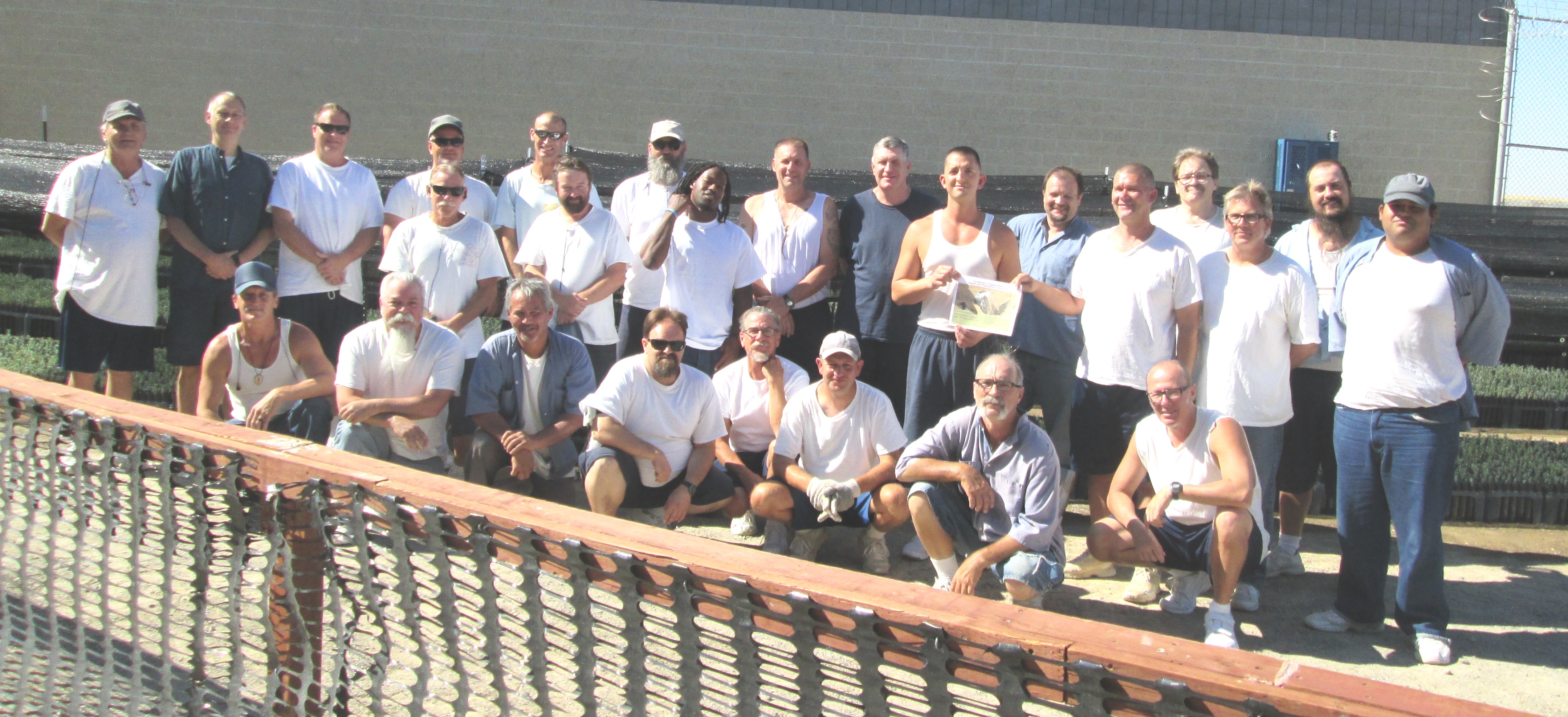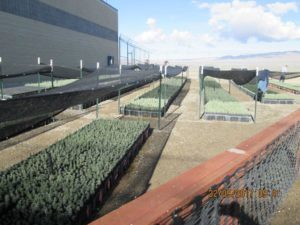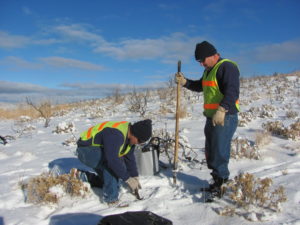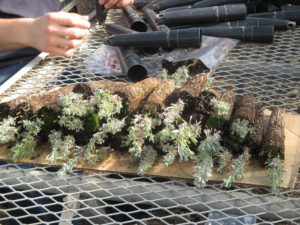Prisoners grow thousands of sagebrush plants for vulnerable grouse, but funding freeze puts program in peril


Participants in a four-year-old program where inmates across the West cultivate sagebrush plants describe their prison yard gardening project as therapeutic, a sanctuary, good for their soul.
They’re tending to seedlings that will eventually be the main winter sustenance for the sage grouse, form cover for nests and help restore some of the vulnerable bird’s fast-shrinking habitat, which has been ravaged by wildfires, mining and invasive cheatgrass. Federal officials say the bird’s range has declined by 56 percent from historical levels, and the number of birds is down an estimated 30 percent since 1985.
“I’ve contributed very little in my adult life while battling my afflictions,” wrote Toby Jones, an Oregon inmate, in a testimonial about the Sagebrush in Prisons program. “Through this project, men’s’ lives begin to have worth; we see that we can be positive and benefit the world instead of bringing it down.”
But with the Trump Administration now withholding $250,000 in annual funding, it’s unclear whether the program that operates in 10 prisons in the West — including three in Nevada — will still be around come the spring planting season. Officials at the Corvallis, Oregon-based Institute for Applied Ecology, which sends staff to teach ecology lessons and horticultural skills in prison, are scrambling for donations on crowdfunding sites, through foundations and even at churches.
“Both the staff and the inmates are devastated,” said Stacy Moore, the institute’s ecological education program director, who added that she was planning to give a talk to a Unitarian congregation in Corvallis that was dedicating a January fundraiser to the cause. “We’re trying to, basically, have bake sales to save this program.”
Moore said she’s reached out to Interior Secretary Ryan Zinke, governors and congressional representatives to try to dislodge some funds for the program. So far, she hasn’t learned much about why the funding is on ice, and hasn’t heard back from anyone saying they can reactivate it.
Officials at the Bureau of Land Management office in Nevada, which receives tens of thousands of sagebrush “plugs” from prison to plant in damaged areas of the high desert, said they couldn’t comment on the fiscal year 2018 budget because it hadn’t been finalized. But they said a halt to the program could make it far more expensive to regrow sagebrush.
“If we were not able to get them from the prison program we would have to use bare root seedlings from agency nurseries. Costs to BLM offices would increase greatly depending on the source,” said Christopher Rose, a Nevada spokesman for the BLM.
A growing program

Sagebrush in Prisons started in 2014 at the Snake River Correctional Institution in Oregon and has grown to include six different states. In Nevada, the program takes place at Lovelock Correctional Center, Northern Nevada Correctional Center and Warm Springs Correctional Center.
The plants that the inmates cultivate are usually sent to the Bureau of Land Management offices in Elko, Winnemucca and Susanville, CA, where they are planted in clusters usually after wildfires have destroyed existing foliage. Compared with raw seed, which has a 5 percent chance of growing to maturity, months-old “plugs” of sagebrush have a far better chance of survival because they have a more-developed root structure.
Shannon Swim, the program coordinator in Nevada, said the institute’s work typically starts in March. She starts with an overview of the project and gives monthly lectures to the inmates on topics including climate change, invasive species and the biology of the sage grouse, a bird known for its elaborate mating ritual.
“It’s usually very new” to the inmate participants, who range in age from 19 to 60-plus, Swim said. “They’re the best audience. They’re totally engaged, they’re thinking about it.”
The inmates start sowing seeds for sagebrush in April, and spend the next months watering and weeding thousands of sprouts. Moore said the size of the cohort varies by prison, but there are usually 10 to 15 inmates working directly with the plants and 30 to 60 attending lectures.
“They’re out there every day for hours just depending on what stage we’re at,” Swim said. “Sometimes they’re out there all day and every day depending on the seasons.”
At the end of the growing season, the sagebrush plants are loaded into trucks and shipped off to the recipients in the BLM districts. Paid crews — who Swim said are faster than inmate crews — do the work of putting the sprouts into the ground, usually in 20 foot by 20 foot clusters that eventually expand further out.
This past year, Nevada inmates cultivated 210,000 plants.
“It’s huge,” Swim said. “It definitely helps them pass the time in a positive way. It gives them a sense of purpose while they’re in there, a sense of humanity. They’re proving to themselves that they’re able to do something positive. They gain valuable skills they can use to get on the outside.”
Inmates receive certificates attesting to the skills they learn while behind bars. In anonymous comments provided to organizers, participants described the effect the program has on them.
“The cooperation and teamwork felt good,” one inmate wrote. “The plants depended on us and we depended on each other to take care of them.”
"I loved the smell of them and miss that already,” said another.
Appeals to restart the program

Moore describes the program as a “win-win-win” and said that without renewed funding, government agencies, the community and the prisoners could be in a bind. She said she knows of at least one private nursery that can provide the kind of starter sagebrush that the prisons program provides, but that there’s not nearly enough to meet the BLM’s full need.
One way the program might survive for the prisoners’ sake is if she can arrange for commercial enterprises, such as mining companies, to pay for the plugs as opposed to giving them to the BLM at cost.
For now, the group hopes to raise $50,000 from a crowdfunding campaign, which it thinks can help provide a financial bridge until a more permanent solution emerges. Supporters have raised about half as much as they want.
“It’s hard to be having to fight for a program that is so valuable in so many different ways,” Swim said. “It seemed like a no-brainer to keep it going.”
